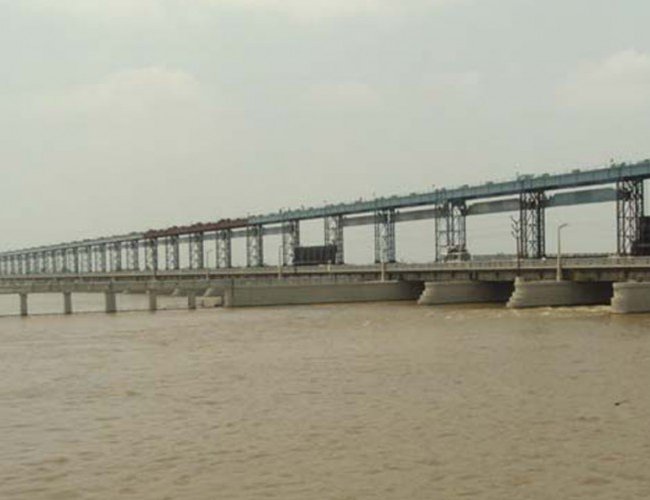
Kosi Canal Waterway can be developed for operation of relatively large river vessels. The proposed canal waterway, connected with the sea, will have exceptionally great significance for our landlocked country to boost foreign trade and facilitate transit across India.
Unique Connectivity
The greatest advantage of the Kosi Canal Waterway would be its suitability for operation of relatively big river vessels that can connect future river port in Nepal with other neighbouring coastal seaports, also located far away from the Haldia seaport, which is at the terminus of the Hooghly River. This type of sea-river shipping is prevalent in Europe and other countries.
The strong advantage of sea-river shipping is found in its unique connectivity. Seaport transshipment is not required for sea-river vessels to be able to connect the hinterland with overseas destinations. This results in lower transport cost and reduced risk of damage on account of the absence additional transshipment. In our case the storage of goods at Haldia or Calcutta port could be avoided.
Good railways and highways cannot be substitutes for waterways. This is the reason why new navigation canals are now being built in China and European countries despite the fact that those countries are covered by dense network of excellent railways and highways.
New Navigation Canals
Towards the end of the last century the construction of the Mainz-Danube canal had been completed. Now German waterways has been connected with the Black Sea. According to Waterway Journal of the USA, dated 23 May, 2011, construction works are to be undertaken on a massive scale to enlarge the capacity of existing waterways in China and France.
China’s Ministry of Transport has announced that it intends to double its investment on waterways construction to US$ 30.5 billion over the next five years. Similarly, France too has announced that it intends to build 66-mile-long super canal to link Paris waterway to a canal network in northern France and the Low Countries at a cost of US$ 6.5 billion.
Nepal’s Waterway Development Policy
In 1960s, Nepal had constituted the Waterway Development Board (WDB), comprising secretaries of all relevant ministries, like the foreign, law, transport, water-energy ministries, etc., as members. The function of the WDB was to facilitate works related to all aspects of inland waterway development to provide our country access to sea.
Needless to mention that for any landlocked country proper access to sea is crucial for its development. Our right to freedom of transit is guaranteed by Barcelona Convention Treaties of 1921 and particularly the Statute on the Regime of Navigable Waterways of International Concern.
Barcelona Convention Treaties
Two international treaties were signed under Barcelona Convention. One of them is the Barcelona Convention and Statute on Freedom of Transit. This is an international treaty signed in Barcelona on 20 April 1921. The treaty ensures freedom of transit for various commercial goods across national boundaries. Another treaty is the Barcelona Convention and Statute on the Regime of Navigable Waterways of International Concern, which is a multilateral treaty concluded at Barcelona on 20 April 1921. The purpose of this treaty is to ensure freedom of navigation in waters (i.e. ports, rivers and artificial canals) which bears international significance.
Both above treaties are registered in League of Nations Treaty Series on 8 October 1922. They went into effect on 31 October 1922. Both these treaties are still in force.
Trade and Transit Treaties with India
Towards the end of the 1960s, a special high level committee had been constituted to finalize Nepal’s proposal for the complete revision of the existing trade and transit treaty with India. Nepal’s proposal included the development of inland waterway leading to a seaport access to our country. Unfortunately due to intransient of Indian Government the finalization of treaty was deadlocked for several years. Finally the treaty was signed but waterway development aspect was dropped.

Dr. A.B. Thapa
Thapa writes on water resources issue
- Dudhkosi Multipurpose Project
- Jul 11, 2022
- Dudh-Kosi Power Project And Kosi Treaty
- Sep 27, 2021
- Uttarakhand Glaciers And Recent Disaster: A Lesson To Our Country
- Mar 02, 2021
- Multipurpose Langtang After Melamchi: Inter-Basin Water Transfer
- Nov 04, 2020
- Large Storage Dams Projects Wary of Giving Away Children’s Inheritance
- Dec 22, 2019












